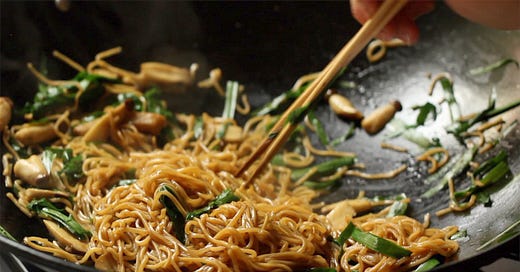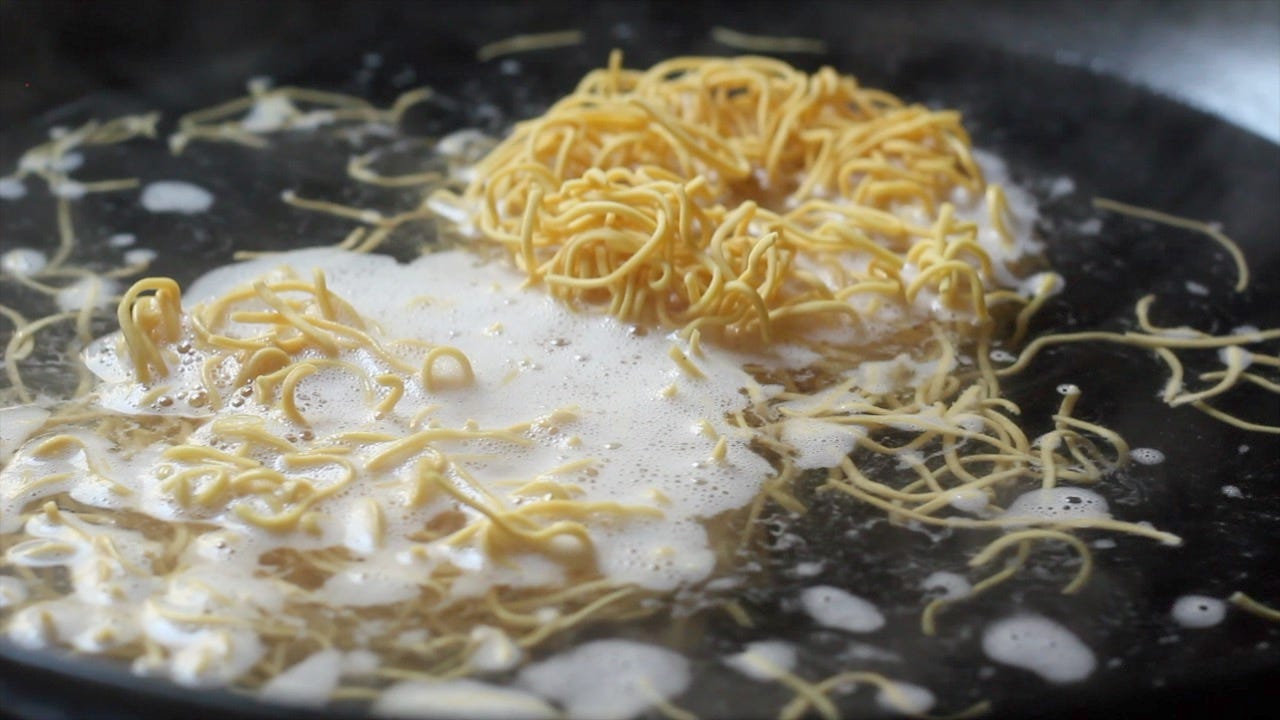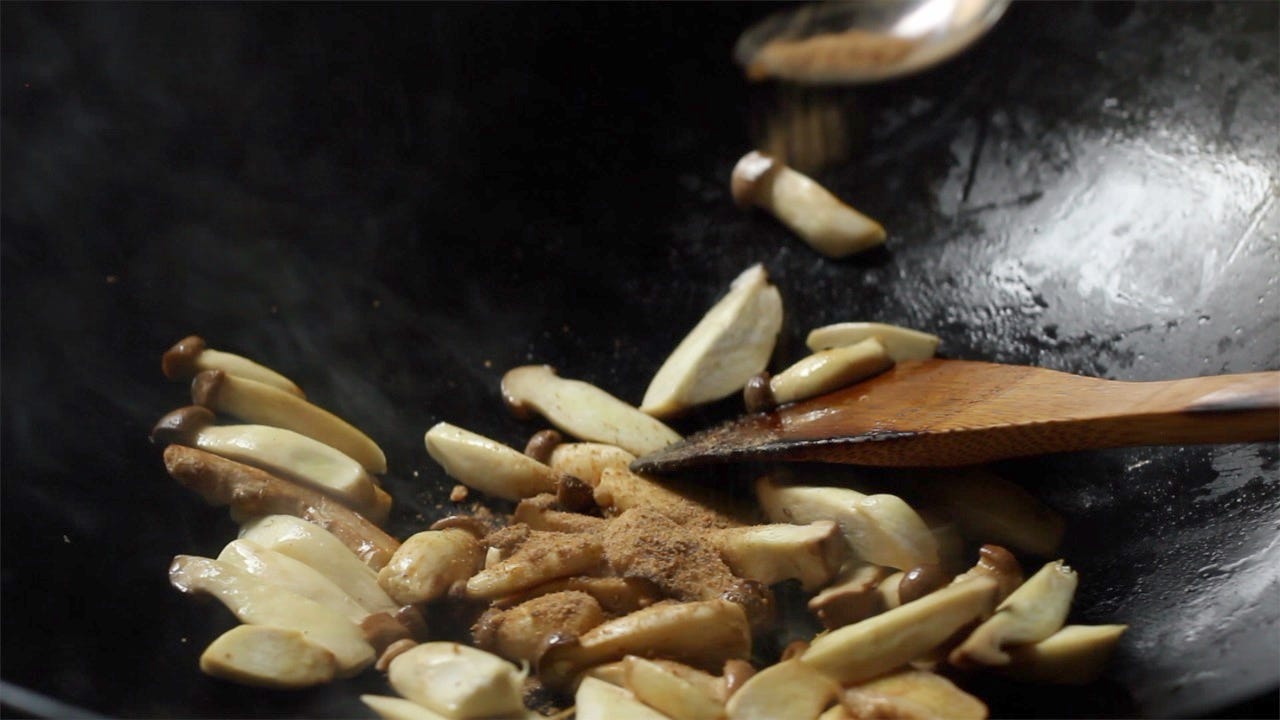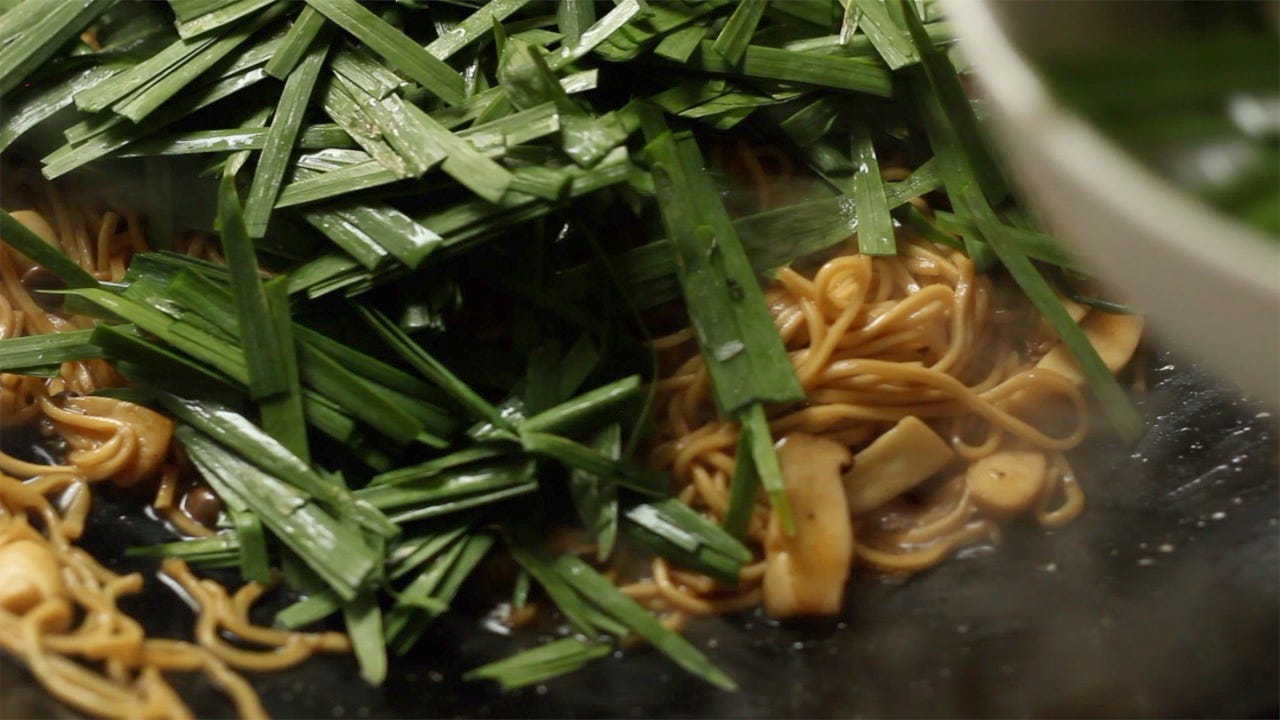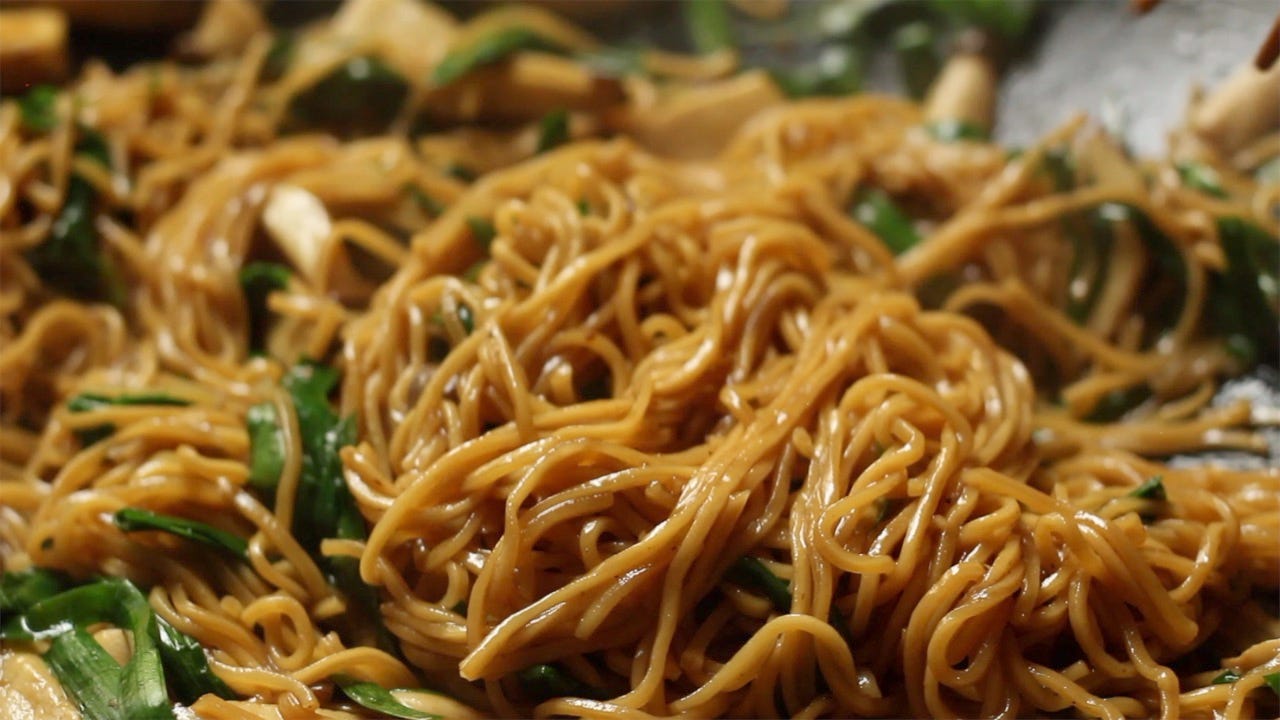On eefu noodles
Chinese weddings in Singapore tend to follow more or less the same order of dishes, and one of my favourites is the braised eefu noodles that are typically served at the tail end of the meal. It is when you, as a guest, are so full from the steamed fish and roast chicken that arrived earlier, but still bring yourself to finish an entire bowlful because it is so good.
Eefu noodles, also known as yi mian or yee meen, are egg noodles that are deep-fried and woven into round cakes. Literally translated, they mean ‘noodles of the Yi house’. It was said that a cook working for an official of the Qing dynasty, Yi Bingshou, accidentally dropped some fresh noodles into a wok of hot oil. Running behind schedule, he dunked the fried strands in broth and served them. They were a hit, owing to the a rich flavour and colour from deep-frying.
The trick to preparing eefu noodles is to blanch them quickly in boiling water before braising - this meets two objectives. One, you are ridding the eefu noodles of any excess oil in the deep-frying process. This makes the final dish taste ‘cleaner’ and somewhat healthier. The Japanese also practise this same technique when using deep-fried shopbought products, such as the aburaage (fried beancurd) and fishcakes, before adding to stews such as oden.
An ingredient that is not really mentioned in many recipes but which I feel really gives this dish its soul is teepoh powder, or dried solefish powder. If you have been a long-time subscriber, you would probably have heard me talk about this before. Frugality is reflected in a lot of the ingredients/ dishes that we see in Singapore, because back then, people did not have much and make the most of what they had. When fish meat was scraped off the bones to make fish balls, the frames of the fish were not discarded but dried, salted, and smoked. The result is this wonderful, umami-rich ingredient that is perfect for infusing into soups, or ground up into powder to add to fishballs or meatballs.
I have seen videos of Cantonese restaurants who have charcoal setups in their kitchens for chefs to roast these dried fish frames on, before grinding and adding to noodle dishes. If you can’t find this ingredient (whole/ powdered), I’ve had success with ikan bilis powder (dried anchovy powder) as well. In a pinch, you could also use powdered instant dashi.
Eefu noodles are typically stir-fried and braised with Chinese chives. Also known as garlic chives, these are pungent and more substantial than Western chives, so they tend to be regarded as a vegetable in Chinese cooking rather than a herb. Yellow chives are the same vegetable, but they are deprived of the sun as they grow. Just like white asparagus, the lack of exposure to to sunlight prevents photosynthesis, causing them to be a pale yellow and have a more delicate flavour. At most wedding dinners that I’ve been to, yellow chives seems to appear more commonly in this dish.
I used green Chinese chives this time because they are far more accessible, and it was just as good. (There’s also another variant of Chinese chives, known as flowering chives. These have hollow green stems, rather than flat leaves, and yellow buds on the end. These have a very strong garlicky flavour and is typically stir-fried on their own.)
One last tip: when everything is cooked and you’ve turned off the heat, add a drizzle of oil and toss well before serving. This really helps the noodles take on a beautiful shine. I love to use homemade spring onion oil, but shallot oil, garlic oil, or regular oil will do the trick too. To make the dish more substantial, you can shred some chicken and stir it through.
Braised eefu noodles
Serves 2

